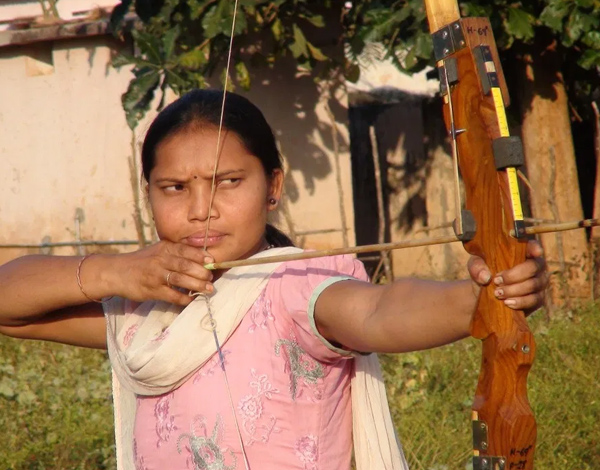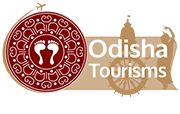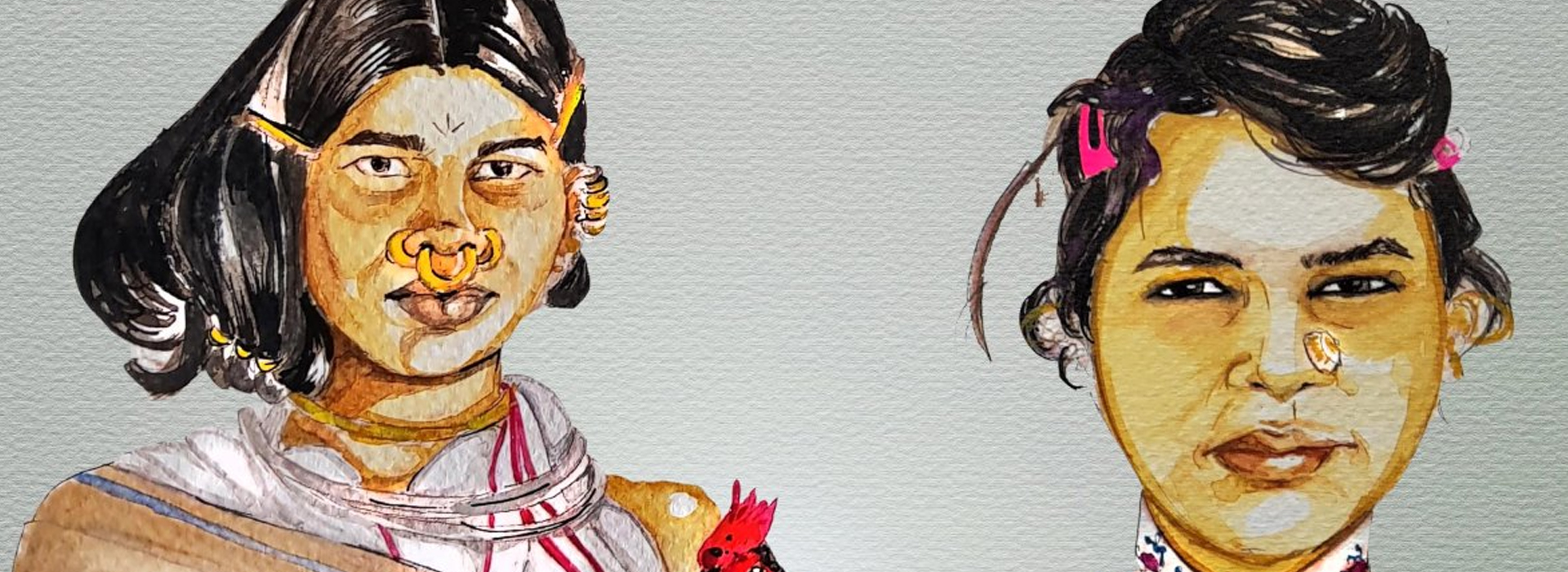Khond :
Tribe Name: Khond; Kondh; Kandha; Ku
Areas Found: Hills and Jungles Kandhamal district in Odisha
Recent Population: 1.8 million (estimate)
Language: Kui; Kuvi
Religion: Hinduism & Christanity
Attire: Dhoti, Ganji and Shirt,Saree and Salwar Kameez, Dupatta
Food Choices:Sal and mahua seeds
Festival They Celebrate:Dussehra, Diwali, Sohraj, Sarhul, Jitia, Phagu Karma, Nawakhani and Ramnavami
Major Occupation:Hunter and Gatherers
Ethnicity:Goddess Durga, Bhagwati, Goddess Lakshmi and Lord Shiva.
Information :
Khond Tribes are usually found in Bihar and are considered as the scheduled tribes. It originates from Odisha and is one of the major tribes of India. Khonds are also found in Andhra Pradesh. They are also called as Kandhs. The tribe is divided into many groups like hill or Kutia and Plain Dwelling Khonds.
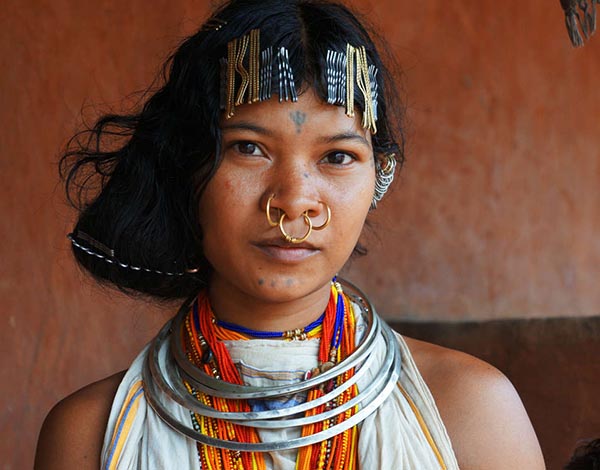
Bonda :
Tribe Name: Bonda,Bondo
Areas Found: Isolated hill regions of the Malkangiri district of southwestern Odisha
Recent Population: 12,000 (approximately)
Language: Remo
Religion: Hinduism & Christanity
Attire: The Bonda are generally semi-clothed, the women wear thick silver neck bands.
Food Choices:rice are the basic food of the Bonda.
Festival They Celebrate:Pausa Parba , Magh Parba , Chaitra Parba / pangal , .Dashara Parba ,. Patkhanda Yatra
Major Occupation:They hunt and forage for food in the forest .
Ethnicity:Podu Cultivation
Information :
Odisha has many tribal communities and Bonda tribals are one of a famous tribes amoung them Bondas are one of the mostpopular tribes found in Khairput Block of Malkangiri District. They are known by themselves as “Remo” which means “Man”. They have their own “Remo” language having no script. This belongs to Mundari group of language. Bondas live in the mountain and hilly ranges covering abut 50Sq. miles (Approx230Sq. k.m.) will known as Bonda Hills .
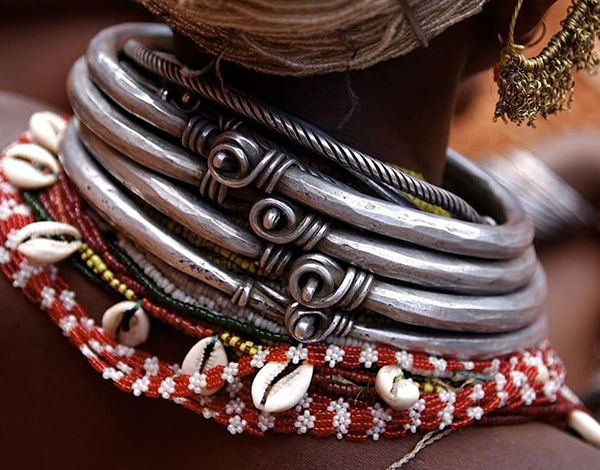
Santhals :
Tribe Name: Santal
Areas Found: Mayurbhanj, Keonjhar, Jajpur, Balasore, Bhadrak, Sambalpur, Jharsuguda, Sonepur, Deogarh, Dhenkanal, Anugul, Jharsuguda, Sundergarh, Kandhamal district.
Recent Population: 49,000 (approximately)
Language: Hindi, Santhali
Religion: Sarna, Sari Dhorom
Attire:The male members wear hand loom loin cloth (kacha), banion, shirts and napkin (gamchha) and women wear green or blue check saree (jhelah).
Food Choices:rice are the basic food of the Bonda.
Festival They Celebrate:santhals fair and festivals ,Karam festivals ,Maghe, Baba Bonga, Sahrai, Ero, Asaria and Namah.
Major Occupation:Hunting, Fishing and Cultivation for their livelihood.
Ethnicity:Apart from dance, Santhals have fun & enjoy& also play great music using Tirio (bamboo flute with the seven holes), an open chest( korom), a short neck(hotok)and a head( bohok), Phet banam (a fretless stringed instrument with three or four strings), Tumdak, Tamak, Junko and Singa.
Information :
Santhals mainly celebrate the karam festival which falls in month of september and October .They celebrate this festival to pray the God to increase their wealth and free them from all the enemies.it is the traditions amoung the santhals to grow the karam tree outside their house after the purification process.other festival of santhals community include Maghe,Bab Bonga,Sahrai,Ero,Asari and Namah.They also celebrate hunting festivals called Disum sendra on the eve of Baisakhi purnima.
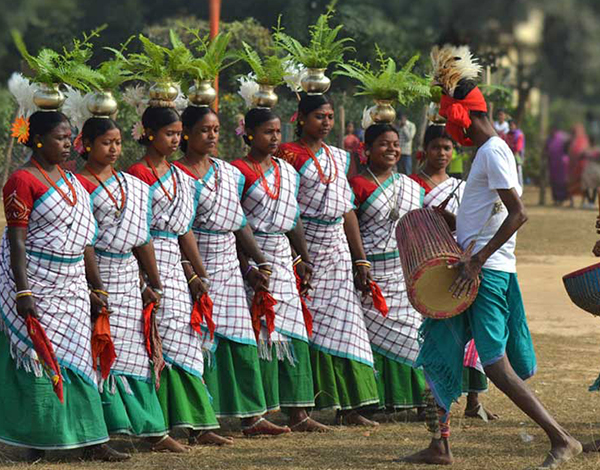
Gonds :
Tribe Name: Gonda,Gond
Areas Found: Nabarangapur Districts
Recent Population: 4 million (estimate)
Language: Gondi
Religion: Janani or the mother of creator, Pharsa Pen, Mariai- the Goddess of plague, God of household & God of fields
Attire: Dhoti,soft cotton saris along with the Choli or blouse.
Food Choices:Two millets known as Kodo and Kutki and Green Leafy Vegetables
Festival They Celebrate:Keslapur jathra is the important festival of the Gonds.
Major Occupation:Farmers,Landowners, Many are landless laborers.
Ethnicity:Ahir (Cowherds), Agaria (Blacksmith), Dhuli (Drummers) and Pardhan (bard and singers).
Information :
The gonds are the tribal community mostly found in the Gond forests of the central india .They are widely spread in the chhindwara District of Madhyapradesh, Odisha .The by which gonds call themselves is kol or koltur which means unclear . Gonda are one of the largest tribal group in the world.
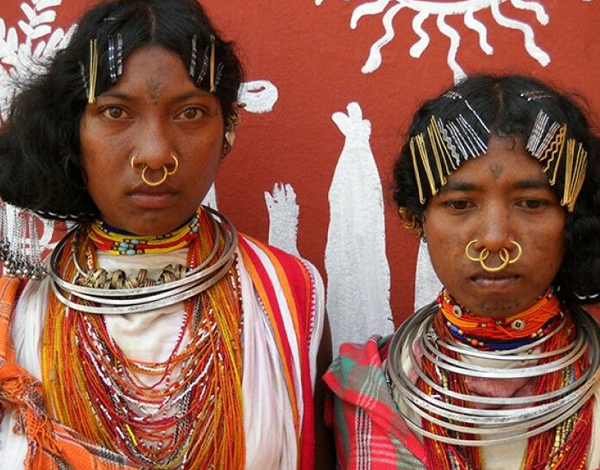
Paroja :
Tribe Name: Paroja
Areas Found: Ganjam and Koraput Districts.
Recent Population:74,253 as per 2011 census
Language: Paraja, Parja or Poroja
Religion: Hinduism
Attire:shirts, banyans, pants for males and blouses, coloured sarees, ribbons, etc.
Food Choices:Rice,Ragi,fish, chicken, crabs, snails, lizards, mouse, pork and flesh of buffalo.
Festival They Celebrate:Asadhiparab,Nuakhia,Chait parab,Bihanthapa, Bhad parab, Diali,Pusparab
Major Occupation:Hunting, Fishing and livestock rearing.
Ethnicity:They cultivate dangardhan, ragi, alasi, khetjanna (bajra), kating, kasala, kandul, biri (blackgram), chana, etc
Information :
The state of Orissa of India is one of the states of Indian Territory, which provides shelter to quite a large number of tribal populace. Paroja is quite significant amongst them. These Paroja tribes are noted for the cultural and social heritage that they have maintained over the years. No external influences have been able to bring about any change in their characteristics.
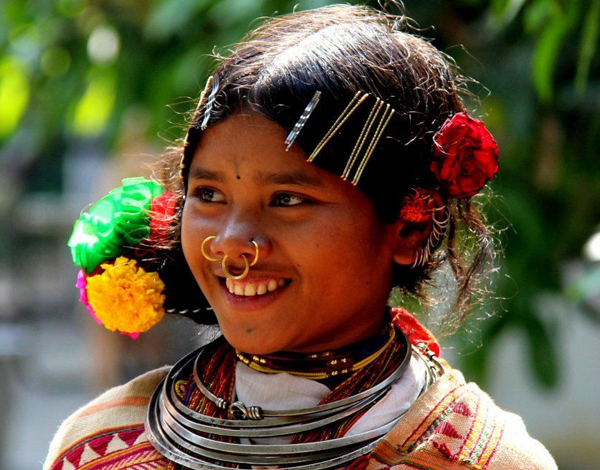
Orans :
Tribe Name: Oran
Areas Found:Inhabiting states of jharkhand and Chhattisgarh Odisha .
Recent Population:186,409
Language: Kurukh, Brahia, Paharia
Religion: Sarna Darma which is a sacred Groove
Attire:Traditional dress for Oraon men is a loincloth—a long piece of cotton fabric with red borders at each end, which is wrapped around the waist.Women’s dress consists of a white cotton sari, with five red lines decorating one end.
Food Choices:Rice,Ragi,fish, chicken, crabs, snails, lizards, mouse, pork and flesh of buffalo.
Festival They Celebrate:Asadhiparab,Nuakhia,Chait parab,Bihanthapa, Bhad parab, Diali,Pusparab
Major Occupation:Hunting, Fishing and livestock rearing.
Ethnicity:They cultivate dangardhan, ragi, alasi, khetjanna (bajra), kating, kasala, kandul, biri (blackgram), chana, etc
Information :
The Oraons , properly speaking , have no villages exclusively of their own. They prefer to live in small units in which co-operation and unity of the members are more secured. The oraons houses are opened either to the courtyard or to the kitchen garden which are protected by walls or fences .
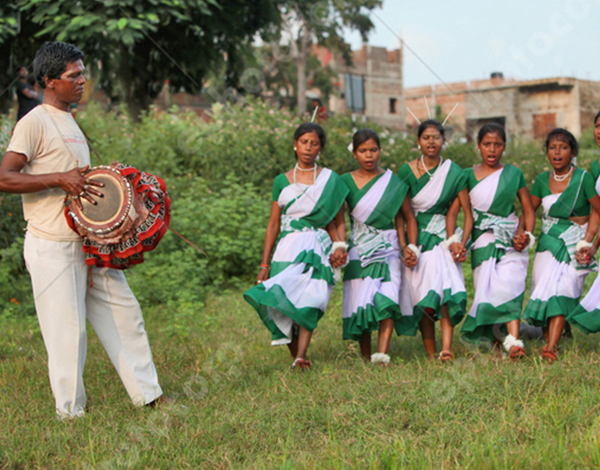
Kolha :
Tribe Name: Kolha
Areas Found:: Mayurbhanj, Keonjhar, Balesore
Recent Population:2751
Language: Kol (Mundari) Hindi and Oriya
Religion: Hinduism
Attire:Men wear white Dhoti with a white Benta or turban on head while the women wear white cotton saree with red border and red blouse.
Food Choices:Handia, a type of fermented liquor, is a favorite drink of these Kolha tribes.They also like all kinds of meat
Festival They Celebrate:Magha Pudi, Baa Parab, Phul Bhaguni, Jamnan Parab, Makar, Asadhi, Gamha
Major Occupation:Cultivation & Labour
Ethnicity: Kolha tribes revere ‘Sajana’ tree, mustard oil, paddy and the dog in special awe and devotion.
Information :
Kolha tribes of Orissa state are mostly found in the Keonjhar district. Most of these Kolha tribes reside in the Bhuyan hills and in the adjacent region, namely, Nayagarh and Chamakpur. These Kolha tribes converse with each other in various languages like Hindi and Oriya. The Kolha tribes has their own tribal dialect which is used to converse with the people of this community. For them, English has assumed the status of secondary language. The popular belief is that these Kolha tribes have been emigrated from the Keonjhar district from the northeastern parts of Indian subcontinent during the last century.
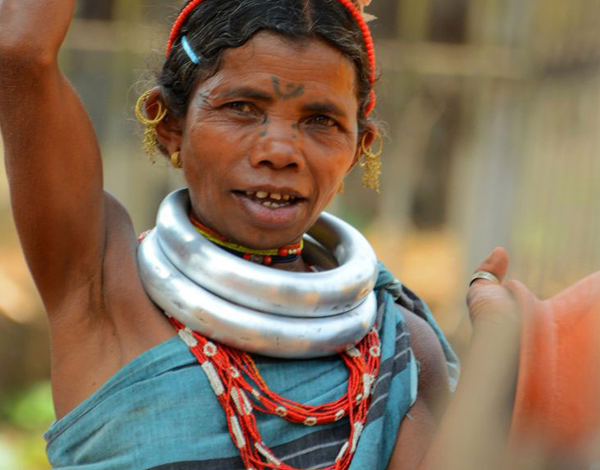
Bhumia :
Tribe Name: Bhumia
Areas Found:: Koraput, Phulbani, Gangam and Sundergarh
Recent Population:1,25,977 as per 2011 census
Language: Jabalpuri and Hindi
Religion: Hinduism
Attire:The males use kasta, dhoti and gamucha and the females use kasta saree.
Food Choices:Wheat and Rice
Festival They Celebrate:Balijatra is the most important festival of the Bhumia tribes.
Major Occupation:They collect fruits, vegetables, roots from the forest, fish, crabs from the streams and rivers.
Ethnicity: Nisani, Mauli and Gram Devta
Information :
Bhumia tribes of Orissa have a rich cultural heritage and are also considered as the most heroic tribal communities. The Bhumia tribes are found in every corner of districts like Koraput, Phulbani, Gangam and Sundergarh. These Bhumia tribes top the list just after the koya tribes in respect of the largest population of tribes of Orissa. Thus for obvious reasons, these Bhumia tribes have drawn the attention of most of the anthropologists of Indian subcontinent.
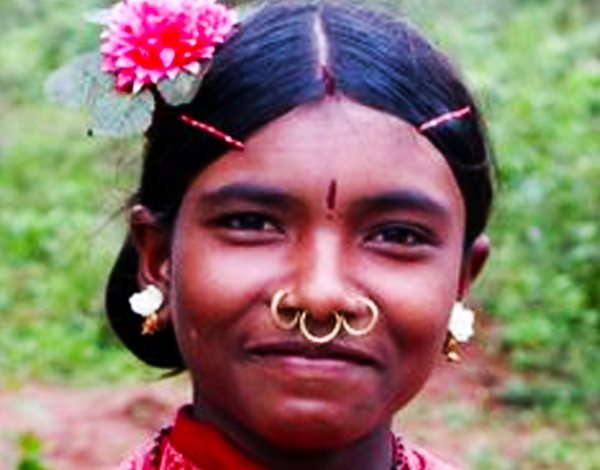
Gadaba :
Tribe Name: Gadaba
Areas Found: Nabarangpur, Malkangiri and Koraput districts of Odisha.
Recent Population:84,689 as per 2011 census
Language: Gutob
Religion: Dissari
Attire:The males use kasta, dhoti and gamucha and the females use kasta saree.
Food Choices:Wheat and Rice
Festival They Celebrate:‘Poos Porop’, ‘Choith Porop’ and ‘Bandha Pond Porop’
Major Occupation:forest products, fishing and hunting.
Ethnicity:The Gadabas also regard cattle-raising as the true source of their wealth. They believe in sacrificing pigs, cows and buffaloes at the altar of their ‘Vanadevata’ (god of the jungle).
Information :
Gadaba Tribe of Odisha is reckoned as one of the oldest and jovial tribes in India. These Gadaba tribes mostly are located in the southern fringes of the Nabarangpur, Malkangiri and Koraput districts of Odisha. Their main occupation is agriculture but they also give due importance to cattle rearing.
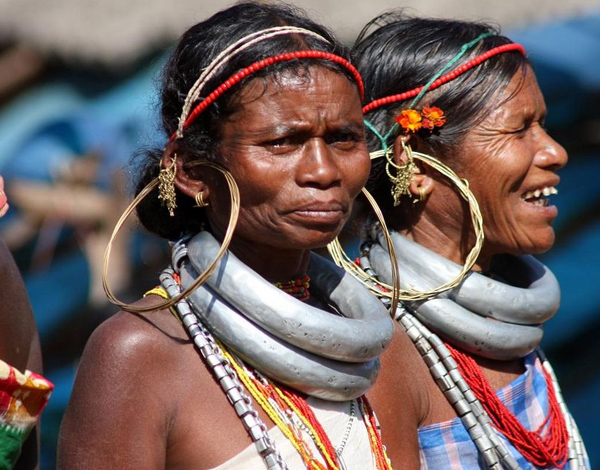
Kotia :
Tribe Name: Kotia
Areas Found: Koraput, Malkangiri, Kalahandi, Kandhamal.
Recent Population:54,000
Language: Desia-Odia (Indo-Aryan)
Religion: Hinduism
Attire: “Lanjia” or “Tail”
Food Choices: Rice
Festival They Celebrate:Pallishree Mela
Major Occupation:Cultivation, Agricultural Labour.
Ethnicity: Chait Parab, Zakhar, Pus Parab, Nuakhia
Information :
The Kotia work in agriculture and laboring. They have a community council. Hinduism is their religion. Boys are educated and girls are partly educated. They use traditional and modern medicines and family planning.
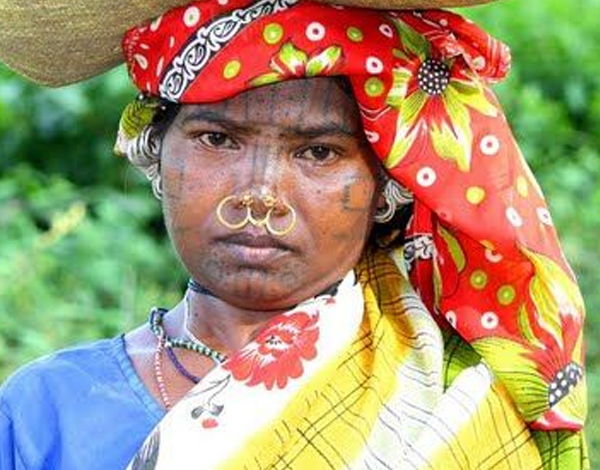
Banjara :
Tribe Name: Banjara
Areas Found: Sonepur, Baragarh, Nowrangapur, Nuapada, Bolangir
Recent Population:18,257 As per 2001 census
Language: Banjari (Indo Aryan), Odia, Hindi, Telgu, Tamil, Kannad, Marathi etc .
Religion: Autonomous Tribal Religion
Attire: wearing the costumes of “ghaghra” and “choli”(a blouse). Ghaghra is a skirt made of red, black and white cotton, embellished with pieces of mirrored glass that are embroidered on it.
Food Choices: Dal,Roti,Meat and Fish veg curry, Chutney, Pickle, Rasam, Buttermilk etc
Festival They Celebrate:Grur Nawami,Dussehra,Holi,Diwali
Major Occupation:Cultivation, Trade, Animal Husbandry, Wage earning
Ethnicity: Banjaras worship Goddess of prosperity Lakhsmi. Hundreds of cowries that the Banjara tribal women wear are much very auspicious as they represent Goddess Lakshmi.
Information :
In western Odisha, the Banjara settlements are found on the hills, forests and mostly on the plains. In multi- ethnic villages, they live in separate wards called, ‘Tanda’.

Bhottada :
Tribe Name: Bhottada
Areas Found: Nabarangpur,Koraput, Kalahandi, Malkangiri
Recent Population:37,5845 As per 2001 census
Language: Bhatri & Oriya (Indo-Aryan)
Religion: Hinduism
Attire:pants, shirts, lungi, banian for men. printed sarees and blouses and ornaments for women.
Food Choices: Fish and Dry Fish, meat, chicken and eggs etc
Festival They Celebrate:Chait Parab, Akhiturtia, Nua Khia, Dussera
Major Occupation:Cultivation
Ethnicity: They cultivate dongar dhan / beda dhan, ragi, sugarcane, minor millets like kangu, kosla and in their dry land they grow oil seeds like alsi, til (rasi), pulses like kandul, dongrani, bodei, ganthia, kulthi (horse gram), biri (black gram) and cereals like janna and khet janna etc.
Information :
The Bhottadas are one of the numerically major agricultural tribe of Odiaha. By their physical traits the Bhottada are of medium height; have a long and narrow head and moderately broad face with broad nasal features. The primary occupation of the Bhottara is agriculture.
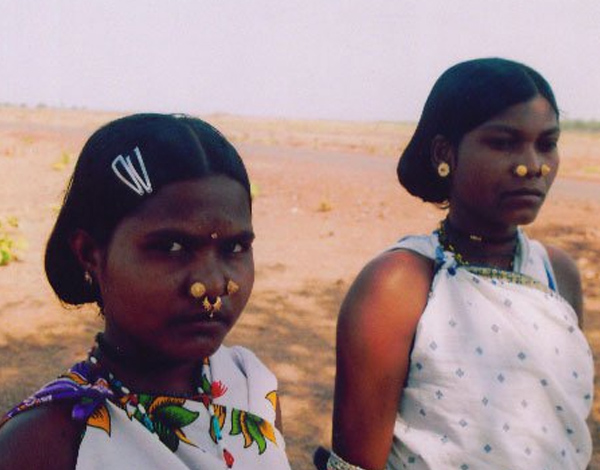
Dharua :
Tribe Name: Dharua
Areas Found: Malkangiri, Koraput, Nabarangpur, Bolangir
Recent Population: 18,151 As per 2011 census
Language: Parji (Dravidian)
Religion: Hinduism
Attire:Short Dhoti , Gamcha or towel for men short coarse sarees for women.
Food Choices: Rice and Ragi
Festival They Celebrate:Lendi Panda, Ghiapanda, Goesendia Hia,
Major Occupation:Cultivation, Forest Collection, Basketry & Agrl. Labour
Ethnicity: They cultivate ragi, bajra, janna, suan, kosla, kangu, maize, pulses i.e., biri, kulthi, kandul and oil seeds such as alsi, mustard and tila etc.
Information :
The Dharua is one of the Gondid tribe and otherwise referred to as Dharua Gonds. The tribe is divided into clans and sub-clans. Each subclan, vansa, is named after a mythological Rishi who is represented by a totemic animal following the Hindu Puranic traditions.
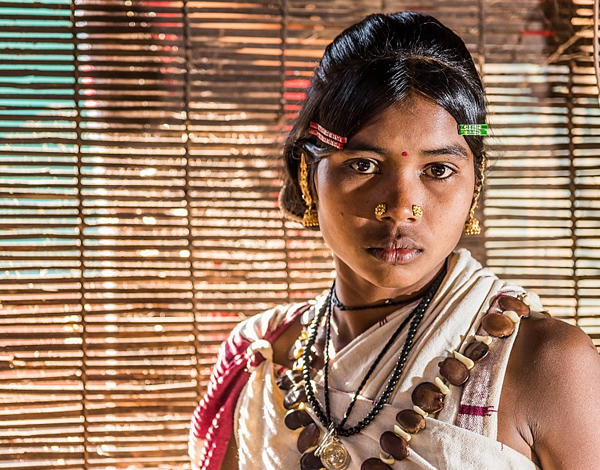
Binjhal :
Tribe Name: Binjhal
Areas Found: Baragarh, Bolangir, Sonepur, Nuapara, Sambalpur
Recent Population:1,19,929 As per 1991 census
Language: Sambalpuri, Oriya (Indo-Aryan)
Religion: Hinduism
Attire:coarse dhoti for men, coarse saree ,ornaments for women.
Food Choices: Rice and wheat are their staple cereals.
Festival They Celebrate:Karama, Harali Parab, Pus Punei or Madhen Parab, Magh Parab
Major Occupation:Hunting & Food gathering, Cultivation, Animal Husbandry
Ethnicity: They cultivate pulses, brinjal, tomato, chilly, cucumber, sugarcane.
Information :
The Binjhal one of the 62 tribal groups living in Odisha, The tradition of the Binjhal associates them with the Vindhya hills. Binjhal people live in medium sized villages inhabited by at leasttwenty families and maximum by fifty families.
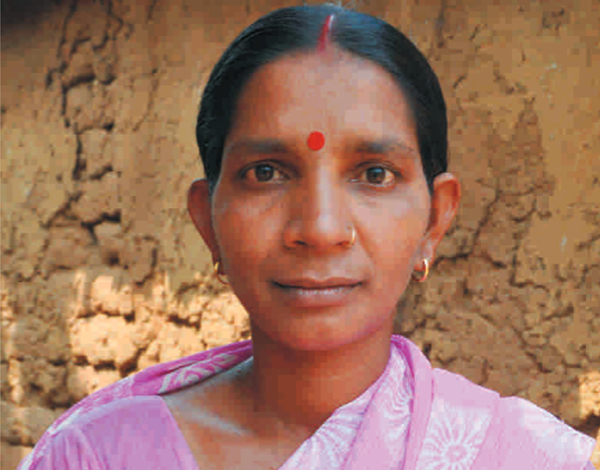
Sounti :
Tribe Name: Sounti
Areas Found: Keojhar, Mayurbhanj, Khurda
Recent Population:92,734 As per 2001 census
Language: Sambalpuri, Oriya (Indo-Aryan)
Religion: Hinduism with admixture of Animism
Attire:piece of loin cloth (dhoti), and a banyan for men . Coloured printed sarees , blouse ,petticoats and ornaments for women.
Food Choices: Rice is their staple food. The Sounti are non-vegetarians and relish fish, dry fish, mutton
Festival They Celebrate:Karama, Harali Parab, Pus Punei or Madhen Parab, Magh Parab
Major Occupation:Raja, Gamha, Makarsankrit, Nuakhai
Ethnicity: They cultivate Paddy, ragi, kosla, kangu and janna, pulses like kulthi (horse gram), biri (black gram), mung (green gram) arhar and oilseeds like til, mustard etc
Information :
The Sounti is a small tribe in Odisha. They are distributed in all the districts of the StateThe Sounti people are primarily agriculturists and their economic life revolves around farming and allied pursuits. Most of them are poor marginal farmers and share croppers. They also domesticate cows, goats and fowls.
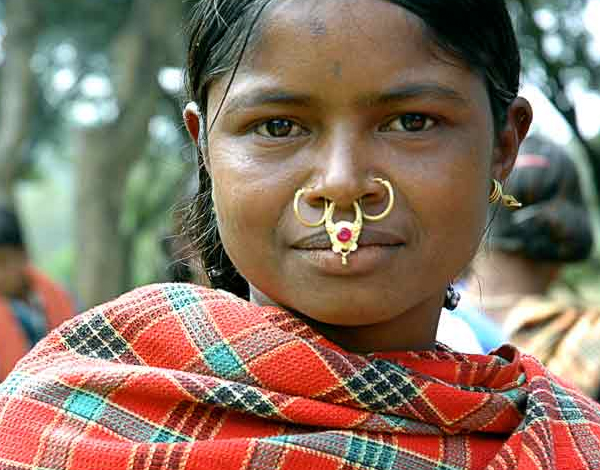
Matya :
Tribe Name: Matya
Areas Found: Dhenkanal, Ganjam, Malkangiri
Recent Population:30,169 As per 2011 census
Language: Matia (Indo-Aryan)
Religion: Hinduism
Attire:Banyan, shirt with napkin, chadar for men. saree and blouse for women.
Food Choices:Rice and dishes of pulses, vegetables, green leaves, edible roots, tubers and mushrooms. They also prefer to eat non-vegetarian foods.
Festival They Celebrate: Nuakhia, Dula Dei puja, Dussera, Rathajatra, Pus Punei, Chait Parab
Major Occupation:Cultivation, Wage earning
Ethnicity: They cultivate paddy, maize, suan, pulses, tobacco and various types of vegetables in their land.
Information :
The name ‘Matya’ comes from the fact that they are expert earth (mati) diggers and more often employed by the neighbouring communities for earth work. Matya men usually consume alcoholic drinks.This tribe is also known as Mati-Bhumiya. main occupation is agriculture. They believe in existence of different god and goddess.
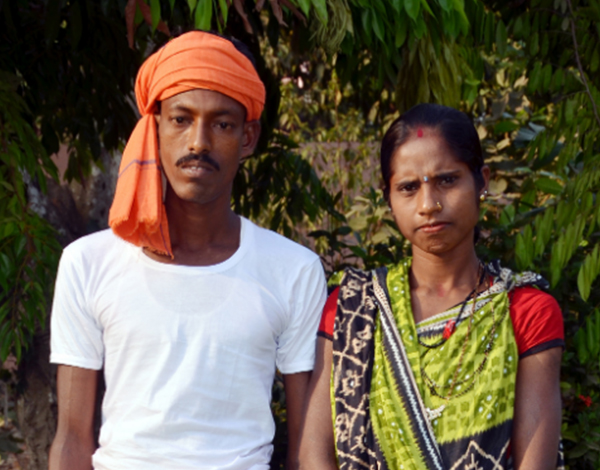
Jatapu
Tribe Name: Jatapu
Areas Found: Rayagada, Gajapati
Recent Population:13,804 As per 2001 census
Language: Kuvi (Dravidian)
Religion: Mixture of Hinduism and Animism
Attire:Pants, Shirts and Banian for men. Coloured Sarees, petticoat, blouse and different type of ornaments.
Food Choices:Rice and ragi gruel constitute the staple food of the Jatapu
Festival They Celebrate:Pongal (Pondugu), Bhagudi, Dussera, Nuakhia
Major Occupation:Shifting & Settled Cultivation, Carpentry, Ropemaking
Ethnicity: They cultivate paddy, ragi, padadhan (a type of paddy), turmeric, zinzer, kangu (a millet), kosla ,alasi , janna, dangaranim, bodhei, kulthi (horse gram), biri (black gram) and red gram brinjal, kumuda (pumpkin), kakudi (cucumber), chilli, lau (gourd) etc.
Information :
Believed to be a civilized section of the Kandha tribe.They follow patrilineal rule of descent and patrilocal rule of residence. Negotiation marriages are common and cross-cousin marriage is the most preferred form. Junior levirate and sororate, divorce, remarriage of widows, wodowers and divorcees are also permitted. Death pollutes not only the concerned family or lineage but also the entire populace of the village. They live near foot hills or hill slopes surrounded by forest and perennial hill streams that provide them drinking water throughout the year.
